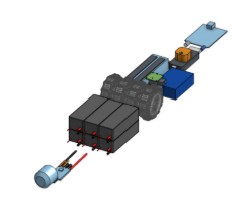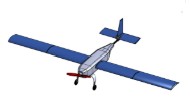Refining Flight: Aerodynamic Analysis and Fuselage Design
By Mechanical Team | October 12, 2024

When designing our aircraft, we needed to balance aerodynamics, structural integrity, and component integration. One of the first steps we took was conducting an aerodynamic analysis to ensure optimal performance. We ran a Computational Fluid Dynamics (CFD) simulation early in the process to analyze airflow characteristics, pressure distribution, and drag forces, which helped us refine the overall shape of the aircraft for better efficiency. At the same time, we created an Onshape model of the electronics bay to determine the approximate fuselage dimensions, making sure there was enough space for all the necessary internal components without adding unnecessary bulk. Using the insights from our analysis, we then developed the final fuselage design in Onshape, incorporating aerodynamic refinements, structural considerations, and practical assembly requirements. By following this structured approach, we ensured that our design met both performance and practical needs as we moved forward in the development process.
Key Achievements:
- Successfully conducted CFD simulations to optimize aerodynamic performance.
- Developed an Onshape model of the electronics bay for precise fuselage dimensioning.
- Refined the fuselage design to balance aerodynamics, structure, and functionality.
- Ensured efficient space utilization while maintaining aerodynamic efficiency.
- Established a structured design approach for future aircraft development stages.
Image Gallery:

Onshape model of electronics, used to determine approximate fuselage dimensions

Onshape model of fixed-wing design